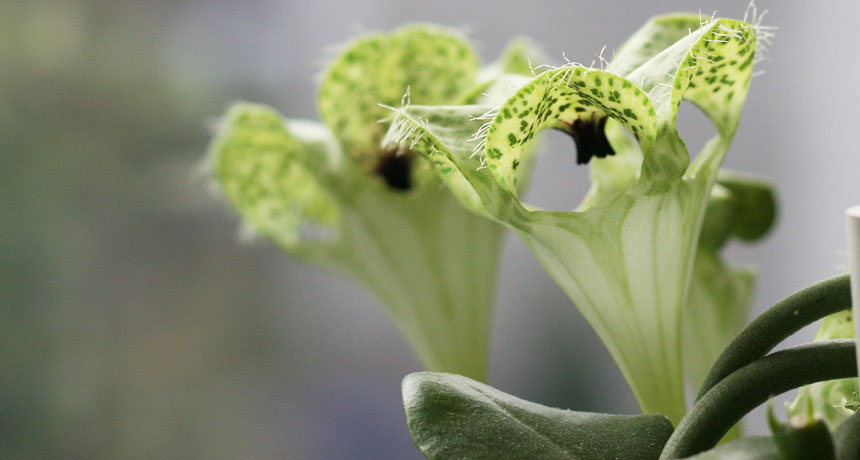Flower lures pollinators with smell of honeybee fear
Trick deceives carnivorous flies with promise of bogus meal

GOTCHA The Ceropegia sandersonii flower (shown) tricks carnivorous flies into pollinating it with false promises of a honeybee meal.
Maja Dumat/Flickr (CC BY 2.0)







